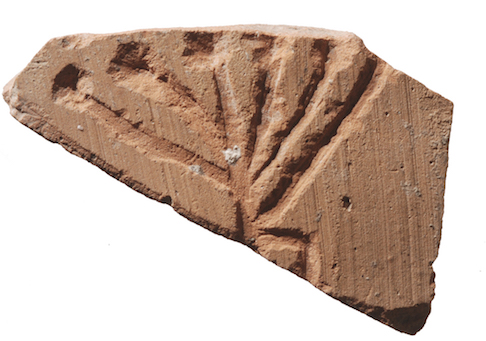Archaeologists recently uncovered a 1,000-year-old potsherd from the Temple Mount in Jerusalem that appears to shed light on a centuries-old debate surrounding the design of the menorah.
Excavators with the Temple Mount Sifting Project discovered the ancient potsherd, which bears a symbol resembling a menorah. After analyzing the clay and texture of the potsherd, archaeologists estimated that it dates back to the Byzantine era (324-640 C.E.).
The ancient shard of pottery is broken, so archaeologists cannot see the full symbol, but they believe that it is a representation of the Temple’s menorah.
"What makes this discovery significant is that it originated upon the Temple Mount itself. The design of the menorah upon the potsherd may shed light upon an age-old debate regarding the appearance of the menorah that stood in the Heikal (hall) of the First and Second Temples," Zachi Dvira, the archaeologist who serves as co-founder and directer of the project, said in a press release announcing the discovery.
While the menorah design originated in the Book of Exodus, the Biblical passage did not specify whether the branches of the menorah were to be round or straight, which gave way to a debate over its appearance that has spanned centuries.
"And you shall make a menorah of pure gold. The menorah shall be made of hammered work; its base and its stem, its goblets, its knobs, and its flowers shall all be one piece with it. And six branches coming out of its sides: three menorah branches from its one side and three menorah branches from its second side … so for the six branches that come out of the menorah … And you shall make its lamps seven," reads Exodus 25:32-40.
Archaeologists noted that the menorah pictured in the potsherd has straight branches, which makes it different from other ancient representations of the menorah that have round branches.
"As the potsherd dates to centuries after the destruction of the Second Temple and the incision was done after firing the clay, it is difficult to deduce from it anything concrete regarding the original shape of the Menorah, but we can learn about how Jews living in Jerusalem during the Byzantine period or later understood the design of the menorah," Dvira said.
The Temple Mount Sifting Project was launched in 2004 to sift through tons of earth that were illegally removed from the holy site in Jerusalem by the Islamic Waqf in 1999. The project receives funding from the City of David Foundation and is sponsored by Bar-Ilan University.
Dvira said that the ancient artifacts uncovered in the sifting project have provided "valuable and previously inaccessible information."
"The many categories of finds are among the largest and most varied ever found in Jerusalem. Even though they have been extracted from their archaeological context, most of these artifacts can be identified and dated by comparing them with those found at other sites," the archaeologist said.
